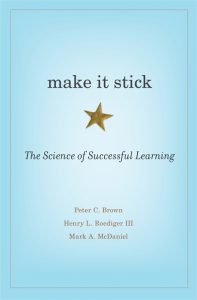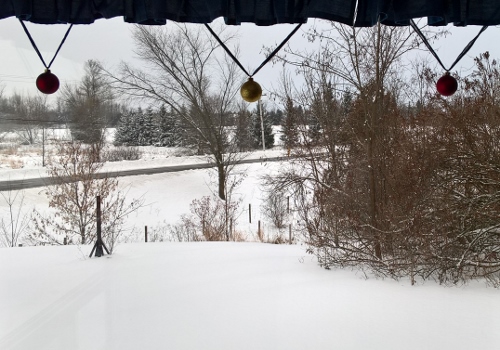
What I’m currently reading and re-reading.
There is so much wisdom and beauty to be found in books, if you select them carefully! I love reading. I’m grateful that I can read very quickly and that I have learned to extract what is important from each book. It’s a joy, too, to share these things with you in my reviews. (Note: All links are to my reviews, on this blog or on GoodReads; there are no affiliate links on this blog.)
This year I will have read 80 books, partly because I needed to rest so much, partly for homeschooling, partly because there is so much to learn as a Christian wife and homeschooling mother living in community with others, and partly for the sheer joy of it. As I look over my 2016 booklist, I can see trends and certain books stand out.
There is more about the psychology of learning than in the past when I would read more course content. Make it Stick is probably the best recent read in this category, but there are other good ones as well.
Aside from a fiction reading month (lovely Dutch books for Christian teen girls, unfortunately not available in English) when I was too weak and tired to do much else, most of 2016’s books are non-fiction. The best fiction was, hands down, Hannah Coulter by Wendell Berry, and I also really enjoyed Waves of Mercy by Lynn Austin.
For the first time I read a book of poetry that I can recommend unreservedly to everyone, Given by Wendell Berry. If you have never read it, do give it a try. He’s a Christian, a nature lover, a besotted husband, and a wise, wise man who explores ideas with incredible imagination and skill. I hope to read another of his volumes of poetry this year and will share it, too, with my family.
I read some history of science, one of my hobbies, including two books about the development of MRI and the controversy surrounding its Nobel prize, Gifted Mind and The Long Road to Stockholm. The urge to be recognized can lead to unpleasantness; there is so much more peace, purpose, and freedom in ‘living for an audience of One’ as was mentioned in a recent sermon. The most fascinating science history book this year was Decoding the Heavens about the Antikythera Mechanism, an incredibly sophisticated ancient Greek predictor of eclipses and more that overturns standard ideas about Greek scientific knowledge and technology. The Doomsday Men was a chilling story of science, the history of 20th century warfare, and the utter disregard for human life by both sides in the world wars. It also showed the incredible and destructive influence of popular books and movies on history and science, so this review is important to read and consider. Galen and the Gateway to Medicine and Mathematicians are People Too, Volume 1 and Volume 2 were part of our homeschool and I recommend them for history and science reading.
The most disturbing and important science history book was actually a history of North American psychiatric medicine, Anatomy of an Epidemic. (Please do read the review; we all need to be informed about such things.) The book is quite cynical but, from my exposure to the pharmaceutical industry as a scientist, it does not sound far-fetched. What is disturbing is how many compassionate people buy into cruelty and questionable practices just because ‘that’s the way it’s done’. There is a hint of holocaust here and also an enormous opportunity for better approaches. This is one of the reasons I have begun to read more about psychology, both about mental health and about why and how people think the way they do. There are so many hurting people and so few Christian psychologists, and I’ve begun to wonder whether that may be where God is calling me as I near the end of homeschooling. See GoodReads for a complete list of psychology and related titles I read last year, some with reviews.
We did not read many books out loud, and one of them, Two Years Before the Mast, we decided not to finish. I will be finishing it on my own, though. But we did complete The Swiss Family Robinson (again), The Sea Islanders (an enjoyable light mystery set in New Zealand), and Sun on the Stubble (a story of growing up in Australia, recommended by Carol, that contains some of the most vivid descriptions I have ever come across.)
And now for next year’s reading plans, which are very informal and, with the one exception of the Bible, completely open to change. As usual, I’ve looked at what my friends and others are planning: Carol, Nelleke, and Sarah have great ideas, and Robin, Tim, and Kathy have interesting reading challenges to join. For the list of book lists, see Sherry’s link up at Semicolon.
My primary reading focus is the Bible, the guide to all we need to know for life now and hereafter. For years I’ve read two chapters a day for myself in a never-ending consecutive trek through the Bible, besides our family meal time devotions. This past year I’ve found myself turning to various other parts of the Bible as well, but I’ve also learned the importance of always reading those two consecutive chapters just to keep balanced. Doing the extra reading beyond that has been hugely rewarding, though, especially in Psalms and Romans, and I hope to continue immersing myself in those books this year.
Other than the Bible reading, my 2017 reading goal is to read whatever seems to be the best use of my time.
Considering past trends, I expect this will include books about homeschooling, history of science, creation science, historical fiction, psychology, relationships, theology and apologetics, and health. Here are some specific titles and plans, but most of the reading will, as usual, probably just happen.
Continuing in the tradition of faraway read alouds, I have ordered The Voyage of the Northern Magic, the story of an Ottawa family traveling around the world. Kon Tiki would be on the list, but we have already read it, and The Brendan Voyage is a bit long-winded although not as bad as Two Years Before the Mast. Perhaps we will try that this year as well, as part of our Canadian history reading.
I hope to finish two lovely music devotionals by Stapert, My Only Comfort (on Bach) and Handel’s Messiah: Comfort for God’s People.
Since 2017 is Canada’s 150th birthday, the girls and I will read a lot about Canadian history. Possibilities include The Brendan Voyage as a read aloud, more books by Eric Walters for fun, Ballantyne’s story of his time with the Hudson’s Bay Company (a bit gruesome at times, but with lots of geography and showing the class structure), and some local history. I need to put more effort into finding other worthwhile teen books about Canadian history.
This year is also the anniversary of the Reformation, so we will focus on that, too. The girls will be studying The Reformation by Nichols, we will finish The Young People’s History of the Church (as a read aloud with narration) and reread Simonetta Carr’s church history series, and hopefully we will be able to read Boekestein’s books on the great Reformation confessions, The Glory of Grace, The Quest for Comfort, and Faithfulness Under Fire. I would like to add a few biographies (including The Mother of the Reformation and Idelette), and we hope to listen to the talks of the Relevant and Rich Conference once they go online.
Closely related are theology and apologetics and their relation to science, and I plan to reread Calvin’s Golden Booklet of the Christian Life as well as Lewis’s Mere Christianity and Sarfati’s Christianity for Skeptics. If I have time, I’d love to slog through McGrath’s Science and Religion textbook and Poythress’s Redeeming Science, but probably Gunning for God by Lennox, The Divine Challenge by Byl, A Shot of Faith to the Head by Stokes or Finding Truth by Pearcey will be more appropriate this year. We’ll see. At the very least, I plan to finish The Beginnings of Western Science by Lindberg.
Psychology books in the pipeline include Girls on the Edge and Why Gender Matters by Leonard Sax, Psychology and Christianity: Five Views by Johnson, Age of Opportunity by Tripp, Resolving Conflict by Priolo, Journey to Heal by Sutherland, Troubled Minds by Simpson and A Teen’s Guide to the Five Love Languages by Chapman.
Politics and Christianity is a potent mix and to understand it better I plan to read Finding Truth and Why Gender Matters (as mentioned above) and The Culture Wars by van Maren.
Reading books together is fun, so I hope to reread the Anglo Saxon Chronicles with Miss 16, One Man’s Wilderness with Mr. 21 and my father, You Are Here by Chris Hadfield for geography fun with the girls, and another volume of Wendell Berry’s poetry to share with anyone who will listen.
As for homeschooling/educational theory, I want to reread A Mathematician’s Lament (see the related essay ), and compare it to Nickel’s book Mathematics: Is God Silent? which I would also need to reread. Miss 19 may be taking a history of mathematics course and if she does I will be reading along with her for this project. Also, Virtuous Minds by Dow is waiting on my shelf. Finally, I would love to reread some works by Douglas Wilson and Wolterstorff (including his insightful essay on hope in education, found in Etherington’s Foundations of Education), and books by and about Charlotte Mason, and tie them all into modern ideas about learning theory, culture, and effectiveness, including the Dutch experiment with SCRUM in education which closely mirrors how our homeschool currently works. But this is only if time and energy allow.
If you, too, have reading plans for next year, please tell about them in the comments or connect with me on GoodReads so that we can help each other find worthwhile books and avoid worthless ones. Or follow me on Google+ where I often mention books and other helpful resources and ideas. For more about books, see 52 Books in 52 Weeks, Semicolon, The Book Nook, Booknificent, and Literary Musings.




